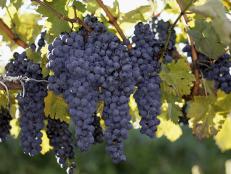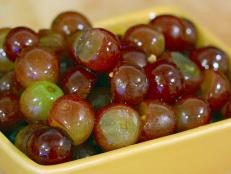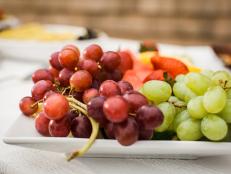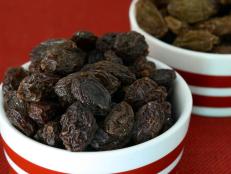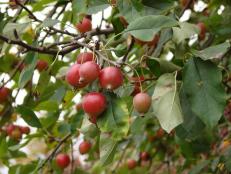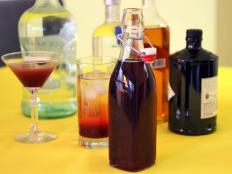Muscadine Jelly

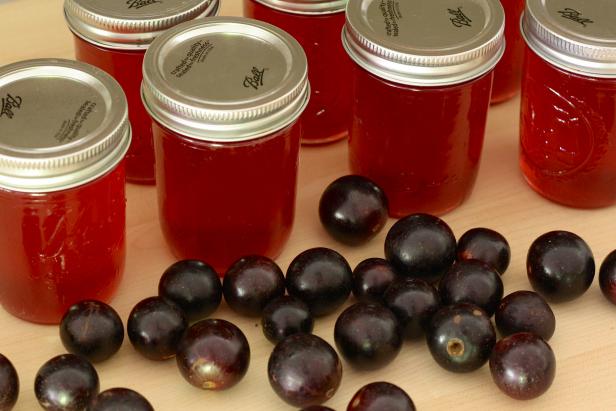
If you don’t live in the South, it’s possible you’re not familiar with this very special grape. Grown only in the hot and humid climates found in the southeastern United States, the reddish-black muscadine and its counterpart, the scuppernong (yellow to bronze in color), are similar to other large grapes in size and color, but there is no mistaking these sweet southern delights.
My introduction to muscadines came not long after relocating from Ohio to North Carolina. When a friend offered me one of these beauties, I cheerfully popped it into my mouth and chewed. And chewed. The hull of the muscadine, it turned out, is surprisingly thick.
“Oh, I guess you can eat the skin, but most people just squeeze the meat out of them,” she explained a little too late.
These days I’m a pro when it comes to eating muscadines. In season September through October, it’s a treat to squish the sweet and aggressively flavorful flesh from the leathery hull. As far as snacking goes, it has some of the same procedural appeal as popping pistachios from their shells.
Squeezed on an individual basis is still my favorite way to enjoy muscadines, but these luscious grapes are more often used for their juice. While the skin can be cooked and pureed for a hearty muscadine pie or jam, muscadines are much more likely to shed their skins for spectacular use in sweet wine, sorbets or jelly.
Muscadine jelly is similar to concord grape jelly but with a brighter, slightly tart flavor and a warm reddish color. It takes a bit of elbow grease to mash the thick hull of these grapes when making this jelly, but the reward is evident when slathering the results on a biscuit or piece of toast.
Muscadine season is fairly short. If muscadines are within your reach, try your hand at preserving the harvest with this vibrant muscadine jelly to enjoy the uniquely sweet flavor of this unusual grape all year long.
Muscadine Jelly
- 3 ½ pounds muscadine grapes (to yield 4 cups juice)
- 2 teaspoons lemon juice
- 1 (3 ounce) package liquid pectin
- 7 cups sugar
Place grapes in a large pot and add just enough water to cover grapes.
Bring grapes to boil and mash grapes using a potato masher.
Continue to boil and mash for 10 to 15 minutes to cook and reduce skin to pulp.
Remove from heat and strain through a fine sieve to remove skin pulp and seeds.
Return 4 cups of juice to pot; add lemon juice and pectin, and bring to a rolling boil.
Add sugar and stir to dissolve.
Once pot returns to boiling, continue to boil for 1 minute, then remove from heat.
Immediately ladle jelly into pint or half-pint jars, leaving ¼ inch headspace.
Cap with lids and bands and process 5 minutes in a boiling water bath.








